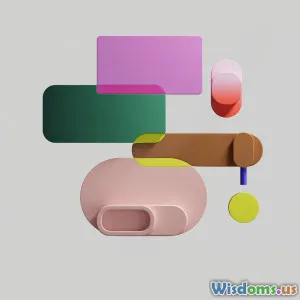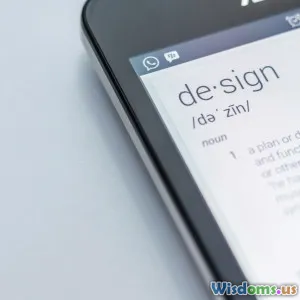
Harnessing AI for Creative Solutions
6 min read Explore how AI can elevate graphic design and boost creativity in the digital age. (0 Reviews)
Harnessing AI for Creative Solutions
In the ever-evolving world of graphic design, creativity is essential, but the process can often be time-consuming and labor-intensive. Enter Artificial Intelligence (AI), a groundbreaking technology that is reshaping how designers work, think, and create. By harnessing AI, graphic designers can improve efficiency, enhance creative potential, and unlock new possibilities. In this article, we will explore the various ways AI can be integrated into graphic design, showcasing its benefits, challenges, and future prospects.
Understanding AI in Graphic Design
Artificial Intelligence refers to the simulation of human intelligence processes by machines, especially computer systems. In graphic design, AI can take many forms, including algorithms for image recognition, machine learning, and generative design. As AI continues to evolve, its applications in graphic design are becoming increasingly sophisticated.
Benefits of Using AI in Graphic Design
-
Automation of Repetitive Tasks
One of the most significant advantages of AI in graphic design is its ability to automate repetitive tasks. For instance, AI tools can handle mundane activities like resizing images, color correction, and layout adjustments, allowing designers to focus on more strategic and creative aspects of their work. -
Enhanced Creativity and Inspiration
AI-powered tools can analyze vast databases of design elements and styles, providing designers with inspiration and suggestions tailored to their projects. For example, platforms like Adobe Sensei leverage machine learning to recommend color palettes and design layouts based on current trends and user preferences. -
Generative Design
Generative design is an innovative process where designers input specific parameters into an AI system, which then generates a range of design options. This method can produce unique and unexpected results that a human designer might not have conceived. Companies like Autodesk are already using generative design in architectural and product design, showcasing its potential across various industries. -
Data-Driven Decisions
AI can analyze user behavior and trends, providing insights that help designers make informed decisions. For instance, tools like Canva use AI to track which templates and designs are most popular, guiding users toward effective design choices.
Challenges of Implementing AI in Graphic Design
Despite its numerous benefits, integrating AI into graphic design also presents challenges:
-
Loss of Human Touch
While AI can automate and enhance, it lacks the emotional intelligence and personal touch that human designers bring to their work. Striking the right balance between AI assistance and human creativity is crucial. -
Learning Curve
Designers may face a steep learning curve when adapting to new AI tools and technologies. Continuous education and training are essential to keep up with these advancements. -
Ethical Considerations
As AI generates designs, questions arise regarding authorship, copyright, and intellectual property. Designers must navigate these ethical dilemmas as AI continues to evolve.
Future Prospects of AI in Graphic Design
The future of AI in graphic design is promising. As technology advances, we can expect:
- More Personalized Design Experiences: AI will enable designers to create highly personalized content that resonates with individual users, improving engagement and satisfaction.
- Collaborative AI Tools: New tools will emerge that facilitate collaboration between AI and human designers, blending unique human creativity with the efficiency of AI.
- Integration with Augmented Reality (AR) and Virtual Reality (VR): Combining AI with AR and VR will open up new avenues for immersive design experiences, transforming how users interact with graphic design.
Conclusion
Harnessing AI for graphic design offers exciting opportunities for creativity and efficiency. By automating repetitive tasks, enhancing inspiration, and enabling data-driven decisions, AI empowers designers to focus on what they do best: creating captivating visual experiences. While challenges remain, the potential of AI to revolutionize the design landscape is undeniable. As we navigate this new frontier, embracing AI as a collaborative partner will be key to unlocking the full spectrum of creative solutions in graphic design.
Rate the Post
User Reviews
Popular Posts





















